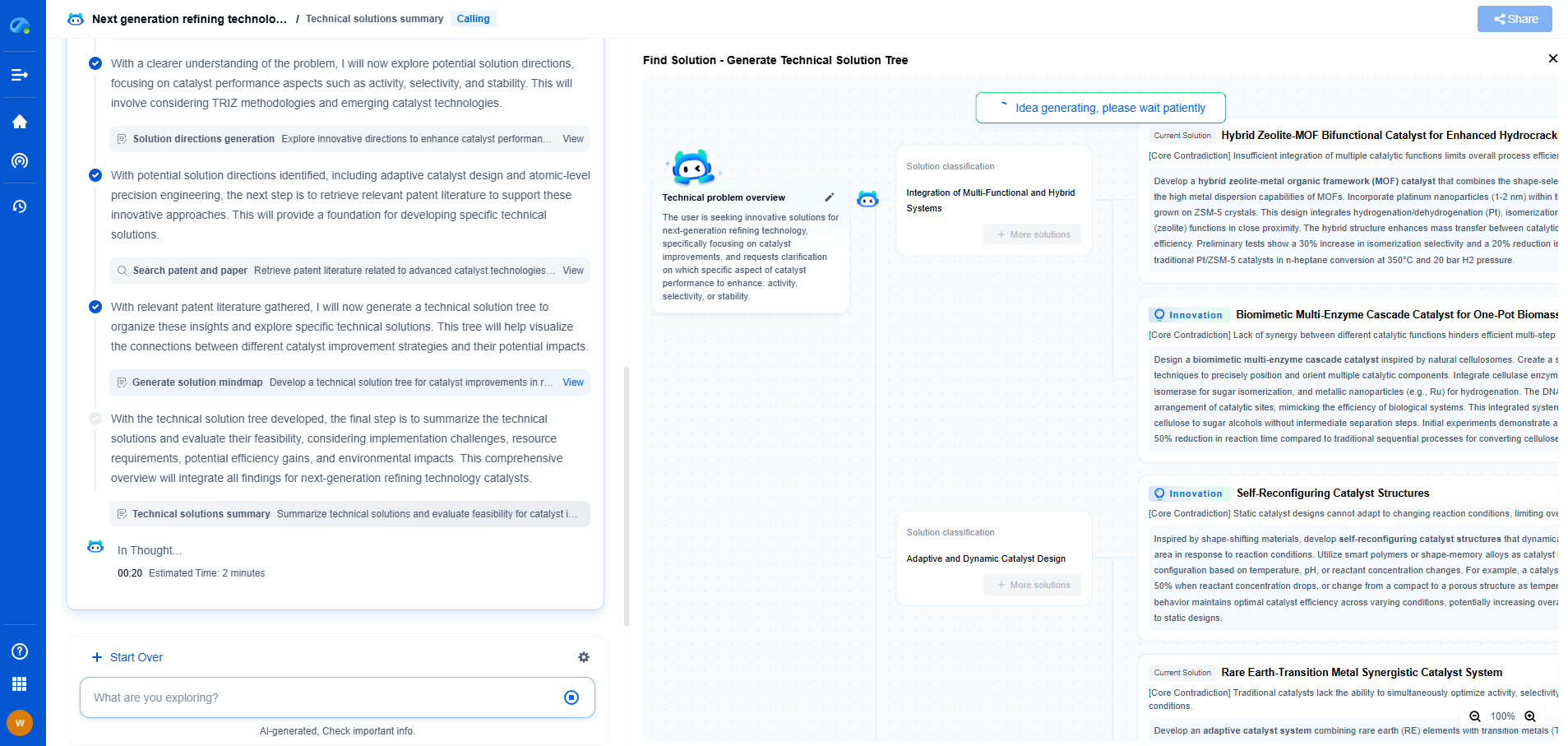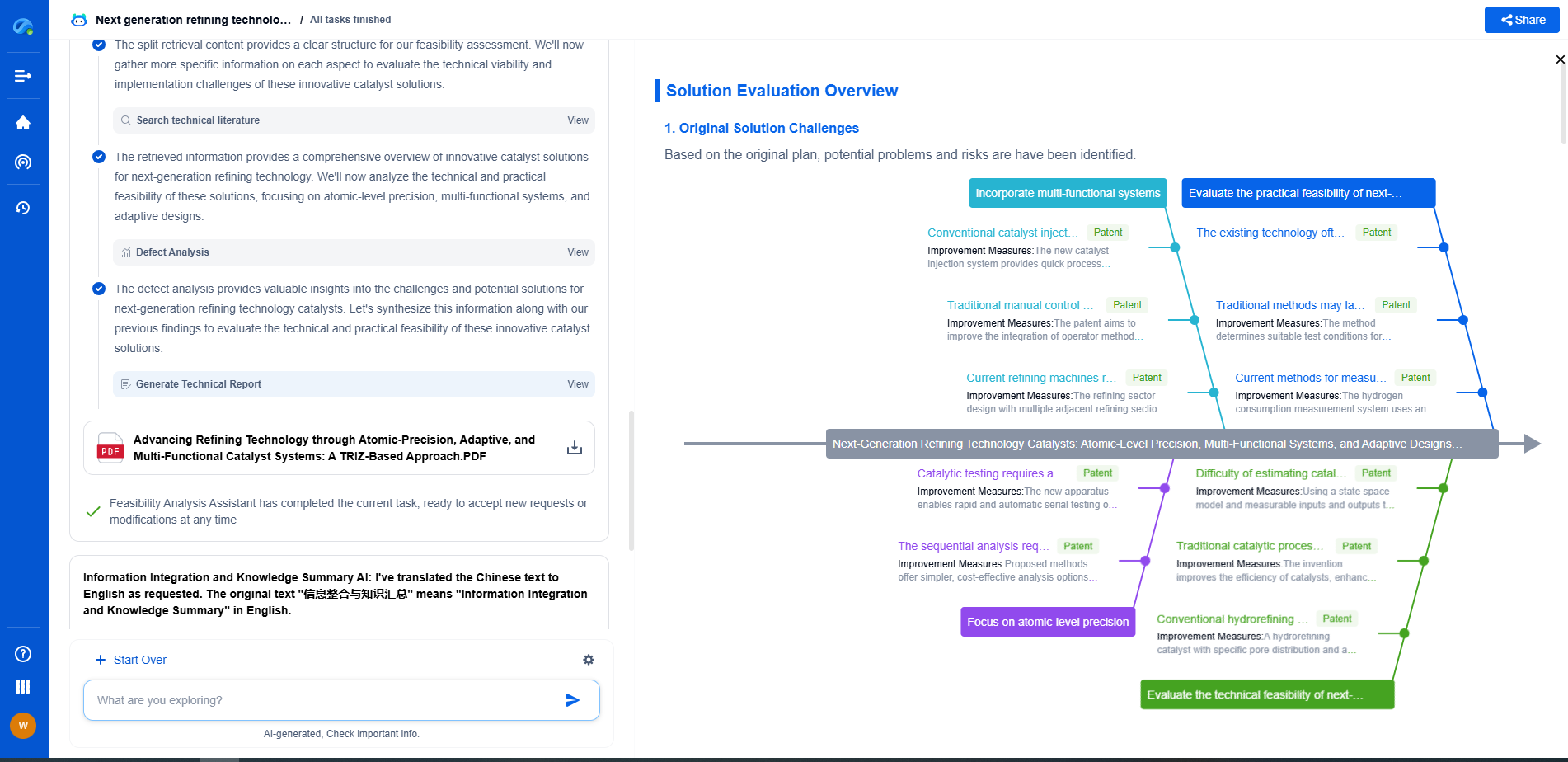Optical USB Interfaces: When Will We See Widespread Adoption?
JUL 4, 2025 |
Optical USB interfaces represent a promising frontier in data transfer technology. Traditional copper-based USB connections have been the backbone of numerous devices, facilitating everything from simple file transfers to complex streaming and peripheral connectivity. However, as our digital demands escalate, the limitations of these traditional systems become more apparent. Optical USB technology, which uses light to transmit data, offers solutions to many of these limitations, including increased bandwidth, reduced interference, and improved transmission distances.
The Advantages of Optical USB
One of the primary benefits of optical USB technology is its potential for high-speed data transfer. Light photons can carry information at a much faster rate compared to the electrons in copper cables. This increased speed can lead to significant enhancements in performance, especially in data-intensive applications such as video production, gaming, and cloud computing.
Moreover, optical USB interfaces are less prone to electromagnetic interference. In environments where electronic noise is a concern, such as in medical or industrial settings, the adoption of optical technology can improve reliability and performance. Additionally, optical fibers are typically lighter and more flexible than copper wires, which can lead to easier installation and handling.
Challenges in Widespread Adoption
Despite its advantages, optical USB technology faces several barriers to widespread adoption. One of the most significant challenges is cost. The production and deployment of optical technology remain expensive compared to traditional copper systems. This cost differential can be a deterrent for manufacturers and consumers alike, particularly when existing technology meets current demands sufficiently.
Furthermore, the transition to optical USB requires changes in infrastructure and compatibility. Existing devices and ports are predominantly designed for copper-based connections. Transitioning to optical systems may necessitate redesigns and new standards, which can be a slow and complex process. There is also the challenge of ensuring that optical USB interfaces remain user-friendly and accessible to the general population, who may not be familiar with the technical differences.
Current Developments and Future Prospects
Recent technological advancements, however, are steadily bridging these gaps. Researchers and companies are actively working on reducing the costs associated with optical technology. Innovations in materials and manufacturing processes continue to drive prices down, making optical USB more viable for mass-market adoption.
Additionally, initiatives towards standardizing optical connections are gaining momentum. Industry leaders are collaborating to create universal standards for optical USB interfaces, which could simplify the transition process. As these standards become more established, the likelihood of broader adoption increases.
Moreover, the increased demand for high-speed, reliable data transfer in emerging technologies such as virtual reality, augmented reality, and the Internet of Things (IoT) provides a catalyst for change. These applications often require the enhanced capabilities that optical USB interfaces promise, which could expedite their integration into mainstream technology.
Conclusion: The Path Forward
While the widespread adoption of optical USB interfaces may face hurdles, the trajectory is optimistic. As technological advancements continue to address cost and compatibility issues, and as demand for faster, more reliable data transfer grows, optical USB is poised to play a significant role in the future of connectivity.
For consumers and industries, this means preparing for a shift towards new standards and embracing the potential that optical technology offers. Though it may take time, the eventual integration of optical USB interfaces could revolutionize the way we connect and communicate, heralding a new era of technological advancement.
Accelerate Breakthroughs in Computing Systems with Patsnap Eureka
From evolving chip architectures to next-gen memory hierarchies, today’s computing innovation demands faster decisions, deeper insights, and agile R&D workflows. Whether you’re designing low-power edge devices, optimizing I/O throughput, or evaluating new compute models like quantum or neuromorphic systems, staying ahead of the curve requires more than technical know-how—it requires intelligent tools.
Patsnap Eureka, our intelligent AI assistant built for R&D professionals in high-tech sectors, empowers you with real-time expert-level analysis, technology roadmap exploration, and strategic mapping of core patents—all within a seamless, user-friendly interface.
Whether you’re innovating around secure boot flows, edge AI deployment, or heterogeneous compute frameworks, Eureka helps your team ideate faster, validate smarter, and protect innovation sooner.
🚀 Explore how Eureka can boost your computing systems R&D. Request a personalized demo today and see how AI is redefining how innovation happens in advanced computing.
- R&D
- Intellectual Property
- Life Sciences
- Materials
- Tech Scout
- Unparalleled Data Quality
- Higher Quality Content
- 60% Fewer Hallucinations
Browse by: Latest US Patents, China's latest patents, Technical Efficacy Thesaurus, Application Domain, Technology Topic, Popular Technical Reports.
© 2025 PatSnap. All rights reserved.Legal|Privacy policy|Modern Slavery Act Transparency Statement|Sitemap|About US| Contact US: help@patsnap.com

